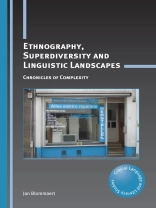Superdiversity has rendered familiar places, groups and practices extraordinarily complex, and the traditional tools of analysis need rethinking. In this book, Jan Blommaert investigates his own neighbourhood in Antwerp, Belgium, from a complexity perspective. Using an innovative approach to linguistic landscaping, he demonstrates how multilingual signs can be read as chronicles documenting the complex histories of a place. The book can be read in many ways: as a theoretical and methodological contribution to the study of linguistic landscape; as one of the first monographs which addresses the sociolinguistics of superdiversity; or as a revision of some of the fundamental assumptions of social science through the use of chaos and complexity theory as an inspiration for understanding the structures of contemporary social life.
Mục lục
1. Introduction: New Sociolinguistic Landscapes
2. Historical Bodies and Historical Space
3. Semiotic and Spatial Scope
4. Signs, Practices, People
5. Change and Transformation
6. The Vatican of the Diaspora
7. Conclusion: The Order of Superdiversity
Giới thiệu về tác giả
Jan Blommaert is Professor of Language, Culture and Globalization at Tilburg University (The Netherlands) and is also affiliated to Ghent University (Belgium) and the University of the Western Cape (South Africa). He is the Director of the Babylon Research Center at Tilburg University.












